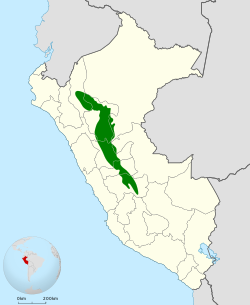| Ramphocelus | |
|---|---|
 | |
| Brazilian tanager (Ramphocelus bresilius) | |
| Scientific classification | |
| Domain: | Eukaryota |
| Kingdom: | Animalia |
| Phylum: | Chordata |
| Class: | Aves |
| Order: | Passeriformes |
| Family: | Thraupidae |
| Genus: | Ramphocelus Desmarest, 1805 |
| Type species | |
| Tanagra bresilia Linnaeus, 1766 | |
| Species | |
See species list | |
Ramphocelus is a Neotropical genus of birds of the tanager family. They have enlarged shiny whitish or bluish-grey lower mandibles, which are pointed upwards in display. However, this is greatly reduced in the females of most species. Males are black and red, orange or yellow, while females resemble a duller version of the males, or are brownish or greyish combined with dull red, orange or yellowish.
Contents
Ramphocelus tanagers are found in semi-open areas. The nest is a cup built by the female of plant materials such as moss, rootlets, and strips of large leaves like banana or Heliconia , and is often in a fairly open site in a tree. The female usually lays pale blue eggs, with grey, brown or lavender spots, and the young stay in the nest for only about 12 days.
The songs of this genus are repetitions of rich one- or two-syllable whistles.
Ramphocelus tanagers hunt at forest edges or in second growth, taking insects in flight or picking them from leaves.
























